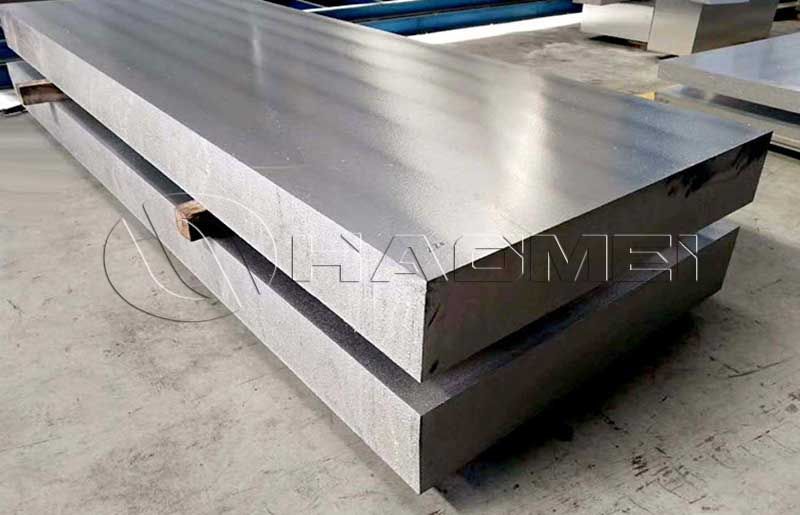
The performance advantages of 2024 aluminum alloy stem primarily from its carefully designed chemical composition. According to the Aluminum Association, the alloy contains 3.8%-4.9% copper, 1.2%-1.8% magnesium, 0.3%-0.9% manganese, and the remainder aluminum and trace impurities.
Copper, as the primary strengthening phase, forms a CuAl₂ intermetallic compound with aluminum. The addition of magnesium significantly improves strength and fatigue resistance, while manganese refines the grain size and improves processability. This compositional design increases the alloy's strength by more than three times compared to pure aluminum, while maintaining a low density of only 2.7g/cm³.

The matweb aluminum 2024 t3 requires a precise heat treatment process. The preparation of 024-T3 requires six key steps: first, the ingot is homogenized at 490-510°C for 30 hours to eliminate compositional segregation; then, multiple cold rolling passes are performed, with the total deformation controlled to over 70%; followed by a 20-minute solution treatment in a 498°C salt bath to fully dissolve the strengthening phases.
Finally, after finishing, natural aging for over 96 hours. This "high-temperature dissolution-low-temperature precipitation" process creates a uniformly distributed nanoscale strengthening phase in the alloy, achieving a fatigue crack growth rate below 3.05×10⁻³mm/cycle, meeting stringent aviation safety standards.
At a microscopic level, 2024 aluminum alloy in the T3 state exhibits a unique "equiaxed grain + dispersed strengthening phase" structure. Samples produced using friction stir deposition (FSD) have demonstrated grain refinement down to 2-3μm, equivalent to 1/20 the diameter of a human hair.
This ultrafine grain structure not only enhances strength but also imparts excellent plasticity. In tensile tests, 2024-T3 achieved an elongation of 10%-15%, significantly exceeding that of ordinary high-strength alloys.
The mechanical properties of 2024-T3 perfectly match the core requirements of the aviation industry. Its tensile strength reaches 400-427 MPa and its yield strength is 269-276 MPa. This means that a 10mm diameter 2024-T3 aluminum bar can lift the equivalent of five family cars. Crucially, the alloy maintains stable performance over a temperature range of -50°C to 150°C, perfectly covering the operating temperature range of civil aircraft.
In aviation manufacturing, the application of 2024-T3 is clearly function-oriented:
Wing and fuselage structures: Due to its excellent fatigue strength, the T3 alloy is widely used in components subjected to alternating loads, such as wing ribs and fuselage bulkheads. The Airbus A350's wing leading edge utilizes 2024-T3 sheet, with a thickness controlled between 1.0 and 2.5 mm, ensuring structural rigidity while reducing weight.
Joint systems: Aviation rivets are another important application for 2024-T3. This alloy offers excellent machinability, achieving a surface roughness of Ra0.8μm with conventional high-speed steel tools. However, the use of cooling lubricants is crucial to prevent tool sticking.
Specialty components: Helicopter propeller blades, missile body components, and other components requiring a balance of high strength and toughness also utilize 2024-T3 forgings extensively. Its impact resistance is over 40% higher than that of ordinary aluminum alloys.
Notably, 2024-T3 has a performance disadvantage: poor corrosion resistance. When exposed to humid environments, it is susceptible to intergranular corrosion. The aviation industry typically adopts two solutions: one is to coat the surface with a pure aluminum layer (about 5%-10% thick) to form an "aluminum-2024 alloy" composite structure; the other is to form a 5-10μm thick oxide film through anodizing treatment, and use it in conjunction with epoxy primer to reduce the corrosion rate to below 0.001mm/year. Welcome to inquire 2024 t3 aluminum sheet price from us directly.
Original Source:https://www.aircraftaluminium.com/a/what-are-properties-of-2024-t3-aluminum.html
Tags: 2024 aluminum sheet ,
Contact Us